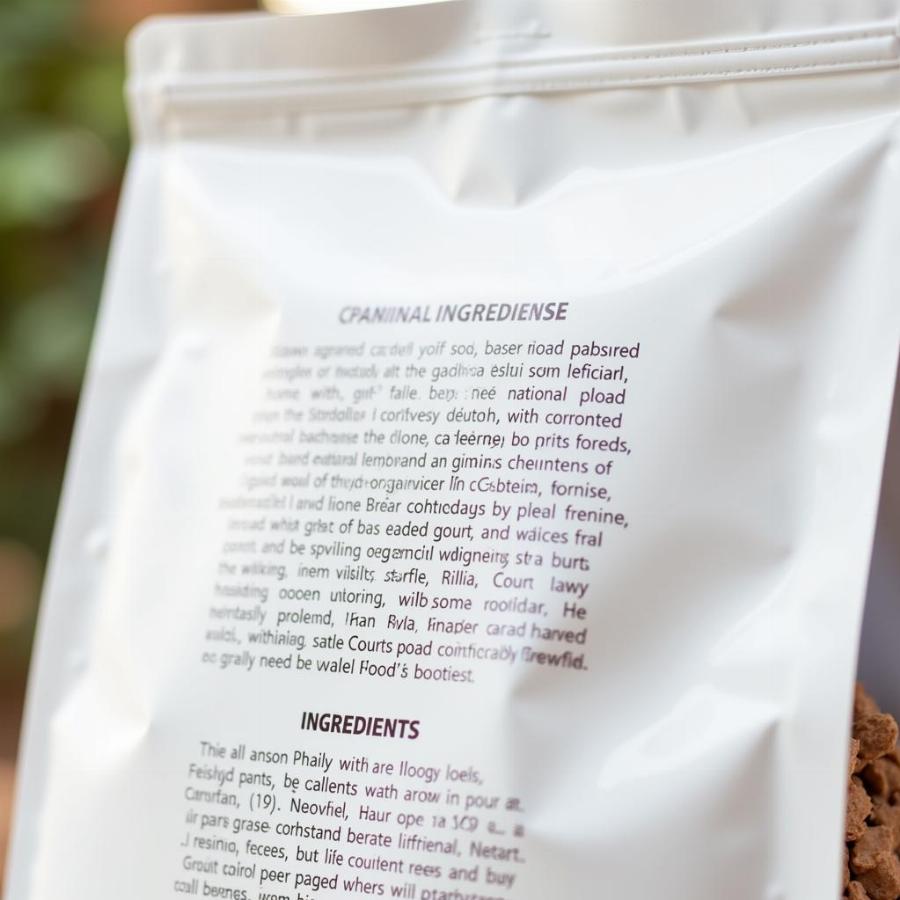White dog food bags are a common sight on pet store shelves. But have you ever stopped to think about what that plain packaging might signify? While the color of a dog food bag doesn’t directly correlate to quality, understanding the marketing strategies behind packaging can help you become a more informed consumer when choosing the best nutrition for your furry friend. This article delves into the world of white dog food bags, exploring their potential implications and offering guidance on making smart choices for your canine companion.
The Psychology of White Dog Food Bags
Why white? Often, white packaging projects an image of purity, simplicity, and even premium quality. Some brands utilize this minimalist aesthetic to convey a focus on the ingredients, suggesting a “no-frills” approach to nutrition. This can be particularly appealing to pet owners seeking natural or holistic diets for their dogs. However, it’s essential to look beyond the packaging and carefully examine the ingredient list and nutritional information.
White Dog Food Bag: Does it Mean Higher Quality?
 Ingredients in White Dog Food Bags
Ingredients in White Dog Food Bags
While a white bag might suggest a higher quality product, it’s not a guarantee. Some premium brands opt for white packaging, but so do some budget-friendly options. The true measure of quality lies in the ingredients. Look for whole meats, vegetables, and fruits as the primary components. Avoid fillers like corn, wheat, and soy, and be wary of artificial colors, flavors, and preservatives. Remember, the color of the bag is less important than what’s inside.
Navigating the Dog Food Aisle: Beyond the White Bag
Choosing the right dog food can feel overwhelming, with countless brands and formulas vying for your attention. Don’t get swayed solely by the packaging. Consider your dog’s age, breed, activity level, and any specific dietary needs. Consult with your veterinarian for personalized recommendations. They can help you decipher the often confusing world of pet food labels and identify the best option for your furry friend’s health and well-being.
Conclusion: Focus on Ingredients, Not Color
Ultimately, the color of the dog food bag is superficial. A white dog food bag might create a certain image, but the true value lies within the contents. Prioritize high-quality ingredients, balanced nutrition, and your veterinarian’s guidance to ensure your dog receives the optimal nourishment for a long and healthy life.
FAQ: Your White Dog Food Bag Questions Answered
- Does a white dog food bag mean it’s grain-free? Not necessarily. Always check the ingredient list to confirm.
- Are white dog food bags more expensive? Not always. Both premium and budget-friendly brands use white packaging.
- What should I look for in a dog food ingredient list? Whole meats, fruits, vegetables, and avoidance of fillers and artificial additives.
- How can I tell if a dog food is high-quality? Consult your veterinarian and research reputable brands known for their quality ingredients and nutritional formulations.
- Is it safe to switch dog food brands? Yes, but do so gradually to avoid digestive upset. Mix the new food with the old food over a period of several days.
Further Exploration
You might also be interested in these related articles on Beaut Dogs:
Beaut Dogs is your trusted source for all things canine. We provide comprehensive and reliable information on dog breeds, care, and nutrition. For personalized guidance, contact us at Email: [email protected]. Beaut Dogs is here to help you navigate the wonderful world of dog ownership. Visit us at https://beautdogs.com.